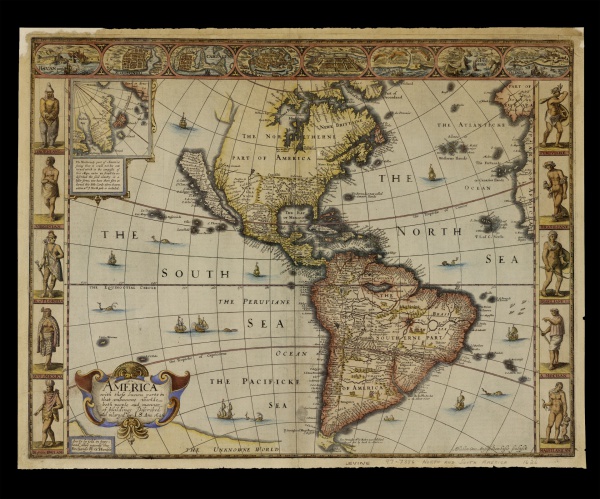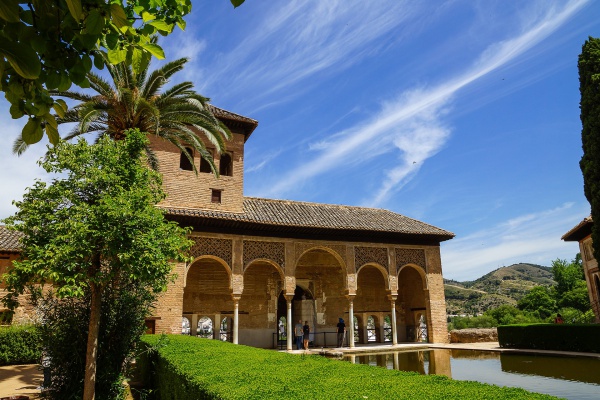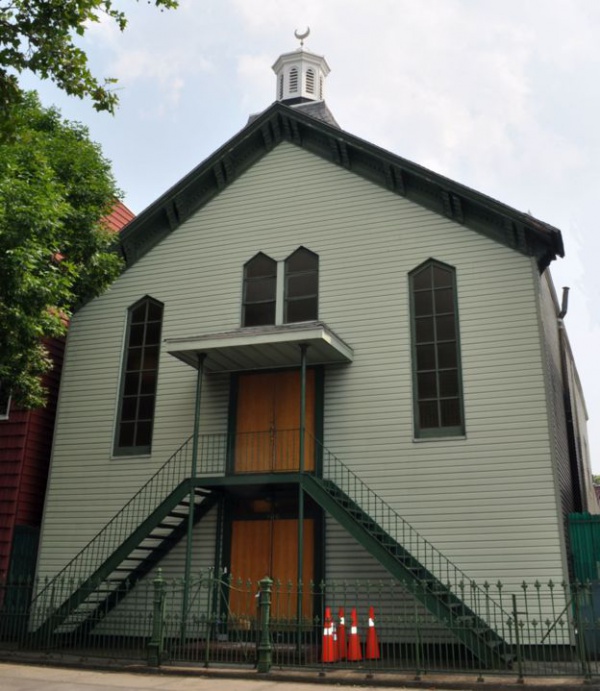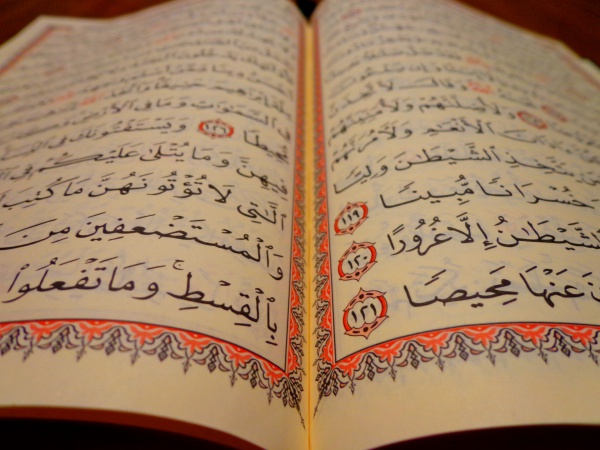The Islamic heritage of America, unfortunately, is now largely ignored by both the general public and researchers. At best, you have heard of pre-Columbus Muslim explorers, discussions about American slaves and notes about migrants from Muslim countries. That is probably the whole list of topics that come up when it comes to Muslims. So the few facts we have gathered for you, will be very interesting and fascinating, and will broaden your horizons.
1. Is it true that African Muslims arrived in America much earlier than Columbus?

Photo: Public Domain
Nowadays, it is widely known that Christopher Columbus was not the first “Old World” traveler, who stumbled upon America. Some scholars suppose that he had been preceded by Muslims.
The most spectacular is the story of Abubakari II, the medieval Sultan of the wealthy Mali Empire, who probably landed at Pernambuco – modern day Recife in Brazil – in about 1312.
The Empire of Abubakari II was the wealthiest at that time. The Sultan was influenced by such Muslim scholars as Al-Idrisi, Istakhri, Abu Zaid, Masudi and Albufeda. Their books were in Abubakari’s library. They claimed that our planet was round like the “gourd of a bottle”.
According to the legend, in 1310 Abubakari II sent a fleet of 400 people out into the Atlantic seeking what might be on the other side. It took several months before the captain of the ship returned and reported to his ruler that he turned back when he saw the other boats dragged into strange “rivers” with strong currents.
Not at all embarrassed by the captain’s stories, Abubakari II immediately began planning the next expedition, gathering even more ships – around 2000. The most surprising thing is that this time Abubakari decided to go on the expedition too. Before his departure in 1312 he handed the throne to his brother Musa. They were never meant to see each other again…
There is no reliable information about what happened to Abubakari II, nor is it known whether he and his subordinates reached Pernambuco. According to one of the theories, the very name of Pernambuco derives from ancient Mande word “Boure Bambouk”, which means “rich gold fields” – the source of the Mali Empire’s wealth. Columbus himself reportedly came across Muslims and “black” traders along the New World coastline and, most interestingly, returned with gold that had the exact alloy mixture of Malian gold. Those who believe this theory also highlight linguistic, archaeological and physical evidence, especially the discovery of giant stone sculptures scattered throughout Latin America, which undoubtedly have West-African features.
2. Spain’s Alhambra was “discovered” by a New Yorker!

Photo: Frank Nürnberger/Pixabay
Most people, including connoisseurs of world art, agree with the statement that the top of European Muslim art is Alhambra in Spain. The “red fortress-palace” is where the Catholic monarchs, Ferdinand and Isabella, completed their conquest of Spain in 1492. However, after those events, Alhambra began to lose its status and significance, withering rapidly. Already by the end of the XVIII century it had fallen into despair, becoming the abode of “a loose and lawless population – contrabandists”.
In 1829, fascinated by the history of Alhambra famous New York writer Washington Irving decided to stay there for some time. As a result, later he published a book called “Tales of Alhambra”, where he compared the palace to the Ka’aba in Mecca: “The Alhambra is as much an object of devotion as is the Ka’aba to all true Muslims. How many legends and traditions, true and fabulous, how many songs and ballads, Arabian and Spanish, of love and war and chivalry, are associated with the Oriental pile!”
Irving’s book became a bestseller and soon afterwards, in 1870, Spain declared the Alhambra a national monument. Today it is one of the most popular tourist destinations in the world.
3. Some parts of Latin America were designed by Muslims
The Alhambra “fell” in 1492, and the day it did, in the town below, there was an ambitious explorer called Christopher Columbus among the watching crowd. A few weeks later, he was in Cordoba, where he met the Catholic monarchs to get the royal approval for setting sail across the Atlantic.
When Columbus and his crew arrived in America, Muslim art and architecture were still in great fashion, and Mudejar (Muslim) artisans remained in high demand. According to several scholars, including another famous Irving – Canadian convert and North America’s first translator of the Quran – Dr. Thomas B. Irving, some of the Mudejars were brought to the New World in order to help build new Spanish cities: “In the XVI and XVII centuries, many of them (skilled Muslim workmen) were contracted to go to the Spanish colonies in the Indies, like Mexico, Upper Peru (Bolivia), New Granada (Colombia), Guatemala and Cuba. In these countries colonial buildings bear clear evidence of Mudejar decoration in their tilework, grills, carpentry, etc …”
Doctor Irving also draws our attention to the Muslim influence even in the names of early cities and towns, such as Recife in Brazil (from the Arabic ar-Racif to mean “dock” or “wharf”) and Guadalajara in Mexico (from “Wadi al-Hijara” or “Stony River”). He also points to the style of early civic buildings in such cities as Queretaro (Mexico), Popayan and Tunja (Colombia) and Quito (Ecuador), where courtyards are decorated with arcades in the Arabic style and resemble those in the Alhambra and other Moorish buildings. For instance, the cloister of “La Merced” in Lima, Peru and the cloister of the University of San Carlos in Antigua, Guatemala. Doctor Irving also highlights the obvious Moorish geometry found on older ceilings of the XVIII century in such cities as Mexico’s Tzintzuntzan and Colombia’s Tunja.
4. European Muslims opened America’s “oldest” mosque

Photo: oficial website of BBC
Firstly, it is worth mentioning that there is really such a term as an “indigenous” European Muslim. The Tatar Muslims from the Baltic region of Europe have a rich history that goes back about 618 years. It begins in 1398 when the Tatars were brought from Crimea by the Grand Duke of Lithuania, Vytautas the Great, in order to help defend his empire against intolerant Christians – the Teutonic Knights.
Vytautas rewarded the Tatars for their help by letting them settle permanently under his protection in the territory that now is a part of Lithuania, Poland and Belarus.
Some of the descendants of that Baltic Tatar community moved to America and Brooklyn, New York, at the turn of the XX century. There in 1931, they purchased a modest little church and opened it as a mosque. Today, the Brooklyn Muslim mosque is the oldest surviving mosque in North America and remains in the care of Tatar Muslims, who can trace their ancestry all the way back to that ancient European Muslim community.
5. The Quran inspired America’s laws on religious tolerance

Photo: Ziya Alishanli/Pixabay
In case you did not know, Thomas Jefferson had a translation of the Quran in his personal library. Nowadays, this early translation of Islam’s holiest book (possibly the first translation in America) is kept on the shelves of the “Jefferson Library” in the Library of Congress in Washington DC. This is where Jefferson personally sent his library, offering also to “arrange and number all the books as they stand in the catalogue”. His Quran he put in the legal section.
For America’s third President (also the man who drafted the Declaration of Independence), the legal aspects of the Quran were especially interesting. It was the very reason why some analysts claim that the Quran ordered by Jefferson in London around 1764, influenced his views on religious tolerance ahead of drafting the Bill for Religious Freedom (adopted in 1786).
In his biography, Jefferson recalls the desire for the bill to go beyond Christian denominations and include “within the mantle of its protection, the Jew and the Gentile, the Christian and Mahometan [Muslims], the Hindoo, and infidel of every denomination”.
Jefferson’s Quran is probably the earliest and clearest physical evidence of the fact that Islamic culture has been interacting with America for many centuries.
However, if you find yourself in the Library of Congress, do take time to stop and admire its magnificent Renaissance dome, high above the beautiful reading room. Look carefully and you will see the clues that will reveal to you the important role of Islam in the development of the United States of America.
Ilmira Gafiyatullina
Photo: Pexels/Pixabay
